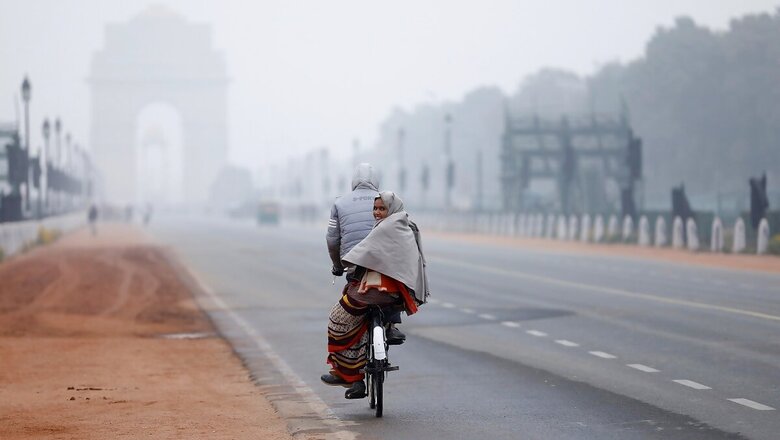
views
The average minimum temperature in Delhi in December was the second-lowest in 15 years, according to the India Meteorological Department (IMD). Data released by the IMD on Thursday showed that the mean minimum temperature (MMT) this December was 7.1 degrees Celsius. It was 7.6 degrees Celsius last year.
The MMT for December in Delhi dipped below 7 degrees Celsius only once in the last 15 years, in 2018 when it was 6.7 degrees Celsius, it stated. The average MMT for December was 6 degrees Celsius in 2005 and 5.9 degrees Celsius in 1996, according to the IMD data.
Delhi also recorded eight cold wave days this December. It had recorded an equal number of cold wave days in December 2018. The city had recorded nine cold wave days in 1965, the maximum so far, the IMD said.
In the plains, the IMD declares a cold wave if the minimum temperature dips to 4 degrees Celsius. A cold wave is also declared when the minimum temperature is 10 degrees Celsius or lower and at least 4.5 notches below normal.
According to Kuldeep Srivastava, the head of the IMD's regional forecasting centre, clear skies over Delhi-NCR, multiple western disturbances affecting the Himalayan region and the global impact of La Nina were the major reasons behind such low minimum temperatures. Delhi recorded "near-normal" minimum temperatures till December 12 as a result of clouds and rainfall in the plains under the influence of western disturbances affecting the region, he said.
Clouds trap some of the outgoing infrared radiation and radiate it back downward, warming the ground. "After December 12, western disturbances mostly affected the western Himalayan region, leading to significant snowfall and rain over Jammu and Kashmir and Himachal Pradesh," Srivastava said.
After the wind system withdraws, cold north-westerly winds blow from Jammu and Kashmir and Himachal Pradesh to Delhi-NCR, bringing the minimum temperature down, he said. "Uplifted fog" over Punjab and Haryana made the winds even colder, he added.
"Besides, the sky over Delhi-NCR remained clear on most days. The global factor of La Nina further contributed to the fall in temperatures," Srivastava said. La Nia is characterised by below-normal sea surface temperatures in the Pacific Ocean near the equator, a result of shifting wind patterns in the atmosphere.
It means colder-than-normal winter across the Northern Hemisphere and warmer-than-average temperatures in the Southern Hemisphere.
Read all the Latest News, Breaking News and Coronavirus News here


















Comments
0 comment